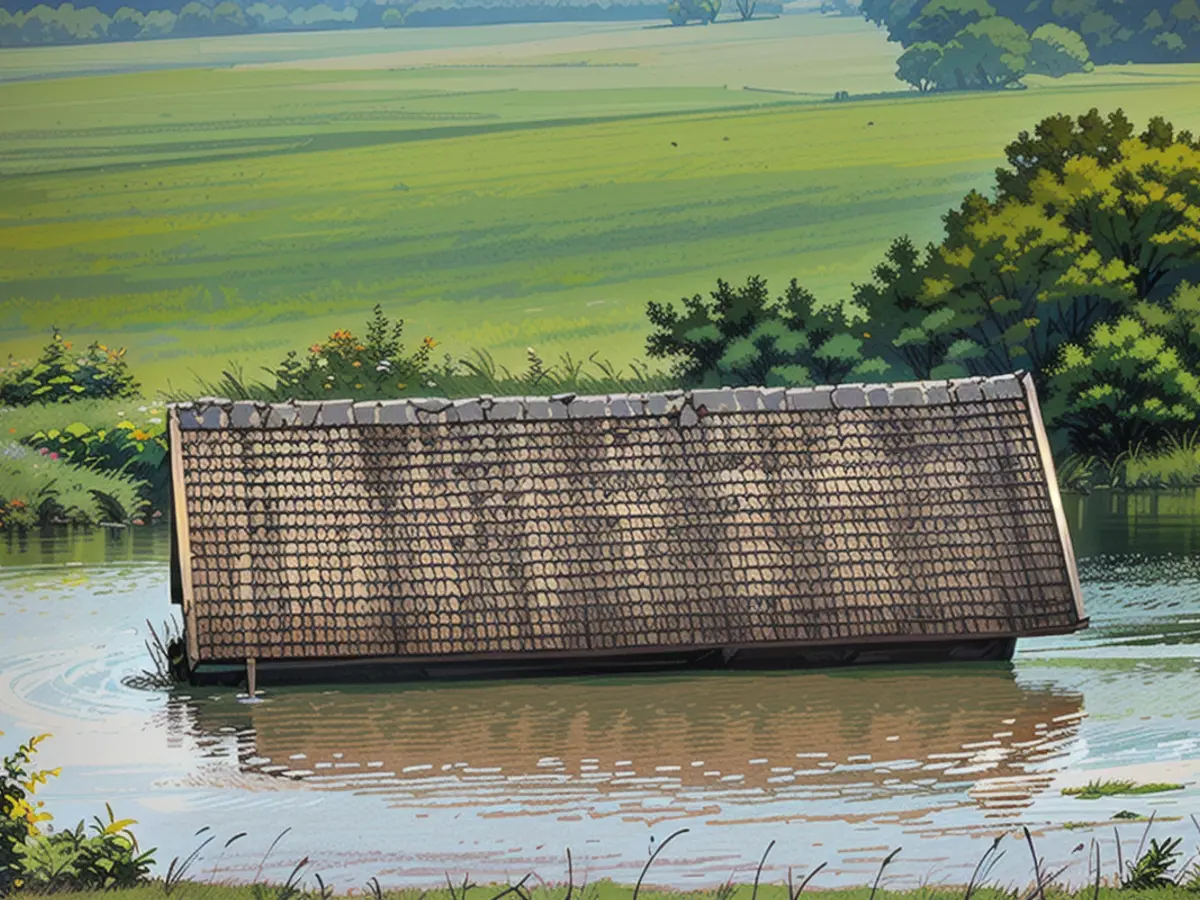Crucial advice during flood situations
Amidst continuous rainfall, southern Germany remains at risk of flooding. Many regions, particularly in Baden-Württemberg and Bavaria, are currently experiencing flood-related issues. Residents must take immediate action to protect themselves and their property. Here's a rundown of ways to do and not do amid this situation:
General Tips During Floods
- Things you should do:
- Stay Informed: Stay up to date with local news, weather reports, and disaster relief notifications from the Federal Office for Civil Protection and Disaster Relief (BBK). Check radio, internet, warning apps like NINA, or authorities' announcements. Access flood situation information on the cross-border flood portal.
- Protect Your Property: Ensure your home is secure by raising furniture, sealing doors and windows, and stowing hazardous substances.
- Prepare an Emergency Kit: Assemble essential items like documents, medications, and emergency supplies in a backpack for quick evacuation.
- Turn off Power: During flood events, switch off electrical appliances near flooded areas for safety.
- Things you should not do:
- Enter Hazard Zones: Avoid areas close to river banks due to risks of undercutting or collapses. Avoid driving in flooded or semi-flooded roads.
- Tourism in Disaster Areas: Refrain from visiting flood sites out of curiosity. This might hamper official rescue efforts and put additional risk on yourself and animals.
- Eat Contaminated Food: While cleaning post-flood, undue contact with contaminated water can lead to health hazards through bacteria. Avoid consuming food that has been touched by floodwater.
Precautions Specific to Your Home or Apartment
It's important to understand that insurance coverage for flood-related damage varies depending on your policy. Elemental damage insurance, available as a supplement to homeowners and household contents insurance, provides flood coverage. Review your policy to understand coverage limits and specifications.
- What you should do:
- Inform your insurer: Take photographs and keep receipts related to the flood situation to aid insurance claim processes. Notify your insurance provider as soon as possible.
- Follow Insurers' Instruction: Adhere to their outlined steps, including any potential liability concerns.
- What you should not do:
- Cause Further Damage: If water has entered your vehicle, ADAC recommends not starting it. Instead, push or tow it away to prevent additional damages.
- Specific Tips for Your Home or Apartment:
With flooding damage covered only if you've insurance elements like elemental damage, be aware of your policy particulars. Some tariffs only cover flooding resulting from overflowing water bodies, not rainfall.
- What you should do:
- Quickly Report Damage: Inform your insurer of the damage immediately. Learn the following steps from your insurance provider.
- Respond to Flooding Rapidly: If a small amount of water enters your house, note it with pictures or videos. Remove water from basements swiftly using drying techniques, pumping, or fans.
- What you should not do:
- Compound Damage: If water has entered the house, ADAC suggests not using electrical devices. Opt for ventilation and air-drying methods.
Remember, taking these precautionary steps can minimize damage and safeguard your well-being amid flood situations.
Read also:
- Seeking advice during such situations, it would be beneficial for homeowners to consult with their insurance advisors to understand their flood coverage options.
- After purchasing an own home, it's essential to invest in adequate insurances, such as elemental damage insurance, which covers flooding, including rainfall-induced damage.
- In the aftermath of a storm and subsequent flood, consumers should visit their local consumer centers for advice on dealing with insurance claims and policies related to the damage.
- During and after a weather event like a storm and flood, homeowners should closely monitor their property's condition and promptly report any damages to their insurance advisor to speed up the claim process.







